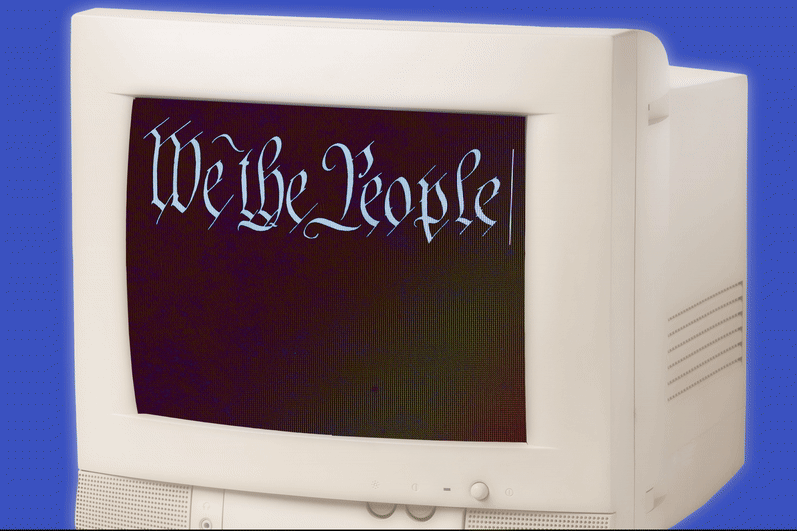Franklin Roosevelt mastered the use of radio. John F. Kennedy and Ronald Reagan were top of the game on TV. And Donald Trump is the first AI slop president.
Since January, Trump’s administration has used artificial intelligence to churn out a steady stream of fake images on social media, from alligators in ICE hats to crying members of Congress,while the official White House account on X has used it to portray the president as Superman, the pope and a villain from “Star Wars.”
Earlier this week, Trump used his account on his personal social media platform, Truth Social, to share an AI-generated clip showing former President Barack Obama being forcibly detained by the FBI. As bizarre as it was, it fit in with his other nonsensical memes, which included various Democrats in orange prison jumpsuits as the “Shady Bunch” and a fake-looking video of a woman in a bikini catching a snake with her bare hands.
There’s a term for someone using social media this way that can’t be repeated in polite company, so let’s just call it slop-posting. It’s usually done by a 14-year-old boy, or someone who still acts like one, and it’s mostly just absurd or mildly offensive. It’s not harmless, necessarily, but it’s mostly just lame trolling.
But when the president does it, it’s something else entirely. Even in the most harmless AI-generated memes, Trump is muddying the waters on what is real, encouraging his supporters to believe everything and nothing. Did a woman in a bikini really catch a snake? Is Obama really going to be arrested? To a Trump supporter steeped in these memes, the answer may not even matter.
The president is supposed to be the ultimate consumer of facts, not a producer of falsehoods.
Still, reality matters. The White House is supposed to be the command center of a vast machinery of intelligence agents, analysts and military strategists who come together every day to figure out what is really happening in the world so that the president can make an informed decision. The president is supposed to be the ultimate consumer of facts, not a producer of falsehoods.
That isn’t always the case, of course. Presidents have lied or cited false evidence in the past, but they paid a price. It became a huge scandal when the president said that a U.S. ship in the Gulf of Tonkin was attacked, that he did not know anything about a break-in at the Watergate, that he did not have sexual relations with that woman or that Iraq sought yellowcake uranium.
A sitting president posting a falsified video of a former president would have been a much bigger deal just a few years ago, but at this point, we are all so tired. Trump has made it his mission to blame everyone else for the problems he’s created, going so far Tuesday as to accuse Obama of “treason” and continuing to push the conspiracy that the left rigged the past two elections.
Obama, who typically tries to remain above the fray, even came out against this latest shock, stating through a spokesperson that while his office normally ignores the “constant nonsense and misinformation” coming from the Trump White House, the “bizarre allegations” of election-rigging are “ridiculous” and a “weak attempt at distraction.”

Outside of the United States, fake images have long been a tool of autocratic governments. In the then-Soviet Union, Joseph Stalin had photographs retouched to remove his political rivals, make himself look more attractive and make his crowds seem larger than they were. In more modern times, North Korea’s Kim Jong Il and Kim Jong Un have photoshopped out their blemishes and tweaked their PR appearances to boost their reputations.











